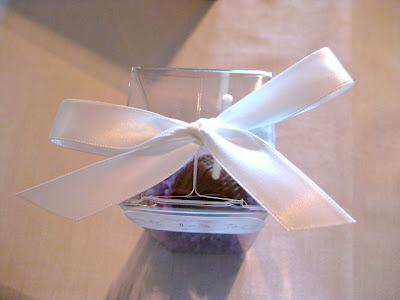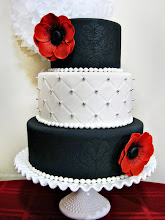 |
| Close-up of a hazelnut-pistachio financier |
Earlier this week, I had the pleasure of attending a French macaron and cookies class (with the lovely Victoria from
Cakeology!) at the
Cambridge School of Culinary Arts. The class was taught by Master Pastry Chef Delphin Gomes, who is absolutely amazing at his craft and super entertaining; we had so much fun!
Now, I was expecting to learn *something* in this class - but it completely blew my expectations out of the water. The class was really, really fanstastic. Life changing, even. I learned A TON, not only about macarons, but about baking technique in general. During the four hour class, we made four flavors of macarons and ganaches - pistachio, raspberry, lemon, and coffee - hazelnut-pistachio financiers, almond tuiles (delightfully flavored with orange zest), and lemon madeleines.
Just a few of the helpful macaron making tidbits that I picked up:
- Two major factors when making French macarons are a) how you whip your egg whites, and b) how much moisture is in your batter. Egg whites should never be whipped to stiff peaks; moisture makes your macarons crack. Humidity should not be a factor (much to the contrary of many sources that I have read).
- To go along with the whole moisture bit - it's best to flavor your macaron shells with extracts, herbs, spices, etc - in other words, you'll get much better results if you use intensely flavored, dry ingredients than it is to try to flavor your shells with say, fruit puree. You would need to add a lot of fruit puree to your batter before it will add enough flavor, and in doing so, you'll add far too much liquid to your batter.
- Too many pans in your oven at the same time can create an environment with too much moisture - which means cracking macarons. To mitigate this; prop your oven door open just a little bit. That will be enough to allow the excess moisture to escape.
- You can make macarons with really any nuts that you like, but make sure that you always use at least half almond flour. Almonds are fibrous nuts that will help hold the batter together, and have a neutral flavor, which will keep the shells from being too over-poweringly nutty.
- If you want to make your own almond flour, freeze the nuts first, and then run them through your food processor with a bit of powdered sugar. This will help you get a super fine flour, and will reduce or eliminate sifting!
Unfortunately, I was too busy taking notes and paying attention to take any action shots (I promise there will be some next time!). Here are a few shots of our finished products:
 |
| All of the amazing treats I got to take home! |
 |
| Pretty and perfect macarons |
 |
| Deliciously crispy almond tuiles |
I absolutely cannot wait to take more classes at the CSCA; Victoria and I are hoping to take every class that Chef Delphin has to offer! If any of you are in the Boston area, I'd highly recommend the school; their recreational programs are awesome, and range from pastry technique to wine tasting classes to cooking classes for couples. Boston peeps - go get your learn on!
And - don't forget to enter to win my first give away - an awesome cupcake decorating kit!




























































